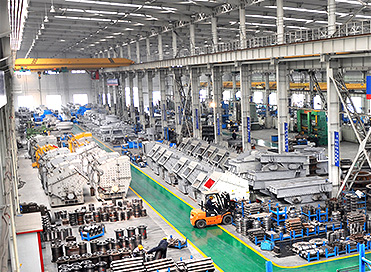The Mobile Aggregate Plant: Revolutionizing On-Site Material Processing
In the dynamic world of construction, mining, and infrastructure development, efficiency and flexibility are paramount. The mobile aggregate plant has emerged as a game-changing solution, fundamentally altering how raw materials are processed directly at the source. Unlike traditional stationary crushing and screening setups that require a fixed location and significant foundational work, a mobile plant is a self-contained, wheel-mounted processing factory that can be transported between job sites with relative ease. This mobility translates into unparalleled operational agility, allowing contractors to process materials like limestone, granite, recycled concrete, and asphalt precisely where they are needed.
The core advantage of a mobile aggregate plant lies in its profound impact on logistics and cost-efficiency. By processing material on-site, it eliminates the enormous expense and environmental toll of transporting raw feed to a distant stationary quarry and then hauling the finished product back to the project location. This not only slashes fuel costs and reduces truck traffic on public roads but also significantly cuts down project timelines. For remote or difficult-to-access sites, the value proposition becomes even stronger, as it makes projects commercially viable that would otherwise be logistically prohibitive..jpg)
Key Components and Configurations
A typical mobile aggregate plant is not a single machine but an integrated system of key components mounted on robust chassis. The primary elements include:
- Mobile Crusher: This is the heart of the operation. Jaw crushers are commonly used for primary crushing, breaking down large rocks into manageable sizes. Cone crushers or impact crushers often serve as secondary or tertiary units, refining the material to specific gradations.
- Mobile Screen: Following crushing, the material is passed through vibrating screens. These units separate the aggregate into different sized fractions—such as sand, gravel, and larger stones—ensuring each product meets precise specifications.
- Feed Hopper and Conveyor System: A heavy-duty feeder delivers raw material into the crusher. A network of radial or stacking conveyors then transports the crushed material to the screen and finally stockpiles the sorted aggregates.
- Power Unit: Plants can be diesel-hydraulic or electric-driven. Diesel offers complete independence from external power sources, while electric models are quieter and produce zero emissions on-site.
Modern plants often feature advanced configurations like “closed-circuit” systems. In such a setup, any oversized material rejected by the screen is recirculated back to the crusher for further processing, creating a highly efficient loop that maximizes yield and ensures consistent product quality without manual intervention.
The Technological Edge: Automation and Control
The evolution of mobile plants is heavily tied to digitalization. Today’s models are far from simple mechanical devices; they are smart systems equipped with sophisticated programmable logic controllers (PLCs) and user-friendly interfaces. Operators can monitor and adjust critical parameters—such as crusher speed, feed rate, and conveyor belt speed—from a remote control unit or an onboard touchscreen.
This level of automation brings multiple benefits. It optimizes performance for maximum throughput and energy efficiency. It enhances safety by allowing personnel to manage operations from a safe distance away from dust, noise, and moving parts. Furthermore, integrated telematics systems provide real-time data on machine health, production rates, and location, enabling proactive maintenance and minimizing unplanned downtime.
Applications Across Industries
The versatility of mobile aggregate plants makes them indispensable across a broad spectrum of applications:
- Construction and Demolition (C&D) Recycling: They are perfect for turning concrete rubble and asphalt from demolished structures into valuable recycled base material for new projects directly on the demolition site.
- Mining and Quarrying: In mining operations, they can be moved to follow mineral veins or used for overburden removal. Smaller quarries benefit from their lower initial investment compared to stationary plants.
- Road Construction: Crews can set up a plant at one end of a road project, processing local materials to create sub-base and base layers as they progress along the route.
- Temporary Projects: For projects with a limited lifespan or those in environmentally sensitive areas where permanent infrastructure is undesirable, mobile plants offer a perfect “in-and-out” solution.
A Sustainable Future On-the-Go
The rise of mobile aggregate processing aligns strongly with global sustainability goals in heavy industry. Beyond reducing transportation emissions as mentioned earlier modern plants incorporate several eco-friendly features.Dust suppression systems including water sprays and fog cannons keep particulate matter under control.Noise reduction technologies such as acoustic enclosures for engines help mitigate noise pollution in communities near urban job sites.Moreover by facilitating high-volume recycling of C&D waste these plants play an active role in promoting acircular economy conserving natural virgin aggregatesand reducing landfill burdens.The ability to process material on-site also minimizes landscape scarring eliminatingthe needfor extensive haul roads associated with traditional quarries.As technology continues to advance we can expect even cleaner more efficientand more intelligentmobile plants becomingthe standardrather than the exceptionin responsible resource extractionand construction worldwide.Their wheels carry not just machinery butthe promiseof amore agileand sustainableindustrial future




